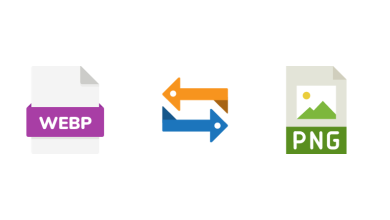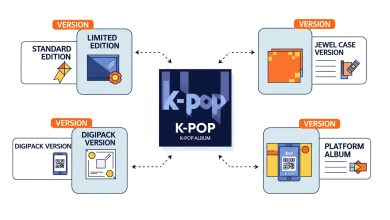AI is transforming the way businesses approach maintenance management, and Computerized Maintenance Management Systems (CMMS) are at the heart of this revolution. Traditionally, maintenance tasks were reactive and time-consuming, but with AI-powered CMMS, businesses can now predict equipment failures, optimize schedules, and improve overall efficiency. This technology not only reduces downtime but also helps organizations make smarter decisions based on real-time data.
In this blog, we’ll explore how AI is reshaping CMMS, streamlining maintenance operations, and driving cost savings while enhancing reliability and performance across industries.

The Evolution of Maintenance Management
The journey to today’s AI-powered maintenance solutions has been long and transformative. Understanding this evolution helps us appreciate just how significant the current AI revolution truly is.
Traditional Maintenance Approaches and Their Limitations
Remember the days of maintenance logbooks and clipboards? Those paper-based systems relied heavily on manual tracking and human memory, leading to missed maintenance tasks and unexpected failures.
Early digital solutions provided basic scheduling but still operated primarily on fixed intervals rather than actual equipment conditions. This created a persistent dilemma – maintenance teams were either doing too little (risking breakdowns) or too much (wasting resources).
The Digital Transformation of Maintenance
The shift from paper to digital preventive maintenance management software marked a significant turning point. Cloud-based platforms eliminated information silos by centralizing maintenance data and enabling remote access.
Mobile capabilities brought this information directly to technicians on the shop floor, dramatically improving workflow efficiency and allowing teams to document work in real-time instead of playing catch-up with paperwork.
The AI Revolution in CMMS
Today’s AI doesn’t just digitize maintenance, it fundamentally changes how decisions are made. Machine learning algorithms can digest years of maintenance history, equipment specifications, and real-time operating conditions to make predictions that would be impossible for humans alone. Unlike traditional systems that simply execute programmed maintenance schedules, AI-powered systems continuously learn and adapt to changing conditions.
This evolution has set the stage for a new era where maintenance becomes increasingly predictive, proactive, and cost-effective. Let’s explore the specific ways AI is transforming maintenance operations.
7 Groundbreaking Ways AI is Transforming CMMS Operations
The integration of artificial intelligence into maintenance management isn’t just an incremental improvement, it’s a fundamental reimagining of how maintenance operations function.
1. Predictive Maintenance Revolution
At the heart of this transformation is predictive maintenance software that uses machine learning to analyze patterns and forecast failures before they occur. These systems digest thousands of data points from equipment sensors, historical performance records, and environmental factors to identify subtle patterns that precede breakdowns.
A manufacturing facility using AI-driven predictive maintenance reduced unplanned downtime significantly, outperforming their previous time-based approach. By predicting failures in advance, they optimized maintenance schedules and improved operational efficiency.
2. Intelligent Work Order Management and Prioritization
Gone are the days of first-come, first-served work orders. AI-powered maintenance work order software now intelligently prioritizes tasks based on equipment criticality, failure probability, available resources, and production schedules.
These systems can automatically generate, assign, and schedule work orders based on AI predictions, ensuring that maintenance teams address the most critical issues first. This shift from reactive to proactive work management has allowed facilities to prevent cascading failures that occur when minor issues go unaddressed.
3. Automated Preventive Maintenance Scheduling
Traditional preventive maintenance scheduling relied on fixed intervals based on manufacturer recommendations or experience. AI systems now dynamically adjust maintenance timing based on actual equipment usage, operating conditions, and performance trends.
For example, a cooling system running at higher-than-normal temperatures might have its inspection schedule automatically accelerated, while equipment operating within optimal parameters might have routine checks safely postponed, optimizing maintenance resources.
4. Real-Time Maintenance Alerts and Anomaly Detection
AI excels at distinguishing between normal variations and truly problematic patterns. Advanced systems now generate real-time maintenance alerts when they detect subtle anomalies that human monitors might miss.
A food processing plant using AI-powered monitoring detected unusual vibration patterns in a critical refrigeration compressor weeks before it would have failed during peak production. The warning allowed for a planned replacement during scheduled downtime, preventing an estimated $200,000 in spoiled product and emergency repair costs.
5. Natural Language Processing for Maintenance Knowledge Management
Maintenance teams possess vast institutional knowledge that traditionally disappeared when veteran technicians retired. AI with natural language processing now captures this knowledge by analyzing technician notes, converting verbal descriptions into structured data, and building searchable knowledge bases.
Some systems even offer voice-activated assistance, allowing technicians to access repair procedures and equipment history hands-free while working on complex equipment.
6. Advanced Inventory Management and Parts Forecasting
Nothing delays repairs like missing parts. AI systems now predict parts failures before they happen and automatically generate purchase recommendations to ensure critical components are in stock when needed.
These systems analyze usage patterns, lead times, and even supplier reliability to optimize inventory levels, reducing both stockouts and excess inventory costs simultaneously.
7. Maintenance Resource Optimization and Workforce Planning
AI optimizes both equipment maintenance and the workforce by matching technician skills to tasks, predicting staffing needs, and identifying training opportunities. This ensures that the right people are available when needed, improving efficiency and effectiveness.
As AI makes maintenance operations more predictive and proactive, it transforms how organizations manage equipment reliability, leading to cost-effective and optimized operations.
Implementing AI-Enhanced CMMS: A Strategic Roadmap
Transforming maintenance operations with AI requires careful planning and implementation to realize the full benefits. Organizations need a clear roadmap to navigate this complex transition successfully.
Assessing Your Organization’s AI Readiness
Before diving into AI implementation, organizations must honestly evaluate their current maintenance data infrastructure and practices. This assessment should examine data quality, availability of equipment sensors, and the technical capabilities of maintenance staff.
Successful AI implementations typically require champions at multiple organizational levels, from executive sponsors who secure funding to floor-level technicians who will use the system daily.
Building a Solid Data Foundation
AI systems depend entirely on quality data. Organizations must ensure they’re capturing comprehensive equipment information, including:
- Detailed maintenance histories
- Operating conditions and parameters
- Failure events and their causes
- Repair times and procedures
Many organizations discover they need to enhance their data collection practices before AI can deliver meaningful insights. This might involve installing additional sensors, improving documentation procedures, or integrating disparate data sources.
Selecting the Right AI-Enhanced CMMS Solution
Not all AI-powered maintenance systems are created equal. Organizations should evaluate potential solutions based on:
- Industry-specific capabilities and use cases
- Integration with existing systems (ERP, BMS, control systems)
- Vendor expertise and implementation support
- Scalability to grow with organizational needs
The most effective solutions typically offer modular implementation paths, allowing organizations to address their most pressing maintenance challenges first before expanding functionality.
Implementation Best Practices and Change Management
Successful AI implementations require thoughtful change management. Maintenance teams may initially resist technology they perceive as threatening their expertise or autonomy.
Organizations should:
- Involve maintenance staff in system selection and configuration
- Provide comprehensive training adapted to varying technical comfort levels
- Start with pilot implementations that demonstrate clear benefits
- Measure and communicate success with specific KPIs that matter to stakeholders
By approaching implementation as a gradual transformation rather than an overnight revolution, organizations can build acceptance and maximize the value of their AI investment.
Understanding Your Maintenance Management Future with AI
AI integration in maintenance management is revolutionizing equipment reliability. It offers new capabilities like predictive maintenance, reduced downtime, lowering costs, and extended equipment life. Organizations that adopt AI-enhanced systems gain a competitive edge through optimized resource use.
As these technologies evolve, the challenge for maintenance leaders is no longer whether to adopt AI, but how quickly they can implement it to stay competitive in a data-driven world.
FAQs on AI in Maintenance
How does AI predict equipment failures before they happen?
AI analyzes thousands of data points from sensors, maintenance history, and operating conditions to identify subtle patterns that precede failures, often catching issues humans would miss.
Can small maintenance teams benefit from AI-enhanced CMMS?
Absolutely. Smaller teams often gain the most from AI’s ability to prioritize work and identify critical issues, helping them focus limited resources where they’ll have the greatest impact.
How long does implementation typically take?
Most organizations see initial benefits within 3-6 months, though building comprehensive predictive models can take 12-18 months as the system accumulates more data and learns your equipment patterns.






